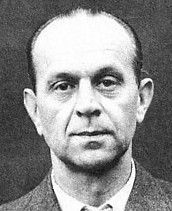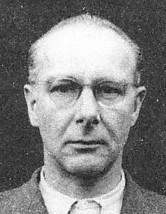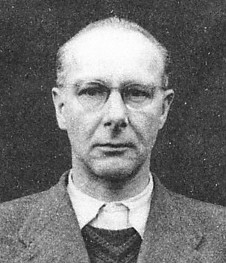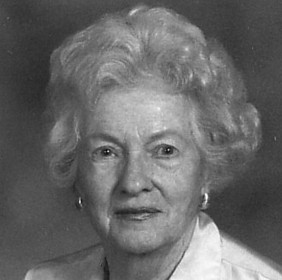Dr. Adolf Pokorny
(back to top)
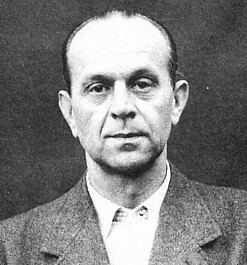
Adolf Pokorny: Physician, Specialist in Skin and
Venereal Diseases.
|
In the sterilization experiments, Reich Leader SS Heinrich Himmler had
made his objective clear, he was interested in the development of a cheap
and more efficient (rapid) method of sterilization that could be used
against the enemies of Germany en masse; in other words, "not only
to defeat the enemy but also to exterminate him." Defendant Dr. Adolf
Pokorny had notified Himmler of a newly synthesized drug from the caladium
plant that, when administered orally or injected, produced sterility in
the animals tested. In a letter dated in October, 1941, Pokorny wrote
to Himmler, "If on the basis of this research, it were possible to
produce a drug, which after a relatively short time effects an imperceptible
sterilization on human beings, then we would have a new powerful weapon
at our disposal." At a conference held on July 7-8, 1942, Himmler
announced that prisoners from the Auschwitz concentration camp would be
used as experimental subjects to test methods of sterilization without
their knowledge.
Pokorny’s earlier statement proves that, he not only had total knowledge
of the intended usage of the experiments, but that he supported its conduct.
This, demonstrates that Pokorny is guilty of violating his commitment
to the Hippocratic Oath. Pokorny knew that the methodology he was suggesting
was a direct and serious violation of the patients’ rights; not only were
they to be sterilized without their consent, but in complete ignorance.
Up to this point I have illustrated how Pokorny can be seen as a perpetrator.
However, the active ingredient, the caladium plant, needed for
the sterilization injections was grown only in North America, thus the
production rate would be too slow to satisfy Himmler’s request, which
I would argue is the primary reason that Pokorny was not convicted.
Although Pokorny’s method did not become the principal form of sterilization,
there are records that Dr. Clauberg, used it to sterilize several thousand
women in Auschwitz. Clauberg reported on June 7, 1943 that it was possible
to sterilize several hundred to a thousand people per day. He went on
to say that such sterilization could be, "performed by a single injection
made from the entrance of the uterus in the course of the usual customary
gynecological examination." For whatever reason, Clauberg was not
part of the trial I have simply incorporated this as evidence that although
Pokorny was not convicted, his methods of sterilization were in fact used
and considered to a significant degree.
These numbers in comparison to the numbers of victims of what would become
the primary method of conduct for sterilization (not yet discussed) may
have appeared to be insignificant in the court room. However, we cannot
morally ignore the fact that still thousands of lives were affected as
a result of Pokorny’s research. In his final statement of the trial, Pokorny
said:
With this hope I am looking forward to your judgment, and in that connection
I am thinking of my children who, for years now, have lived under the
protection of an allied power, and who will not believe that their father,
after everything that he has suffered, could possibly have acted as an
enemy to human rights.
One has to wonder what effect supplying such a drug to Himmler would
have had on the fate of thousands of victims of forced sterilization,
had Pokorny successfully synthesized such a drug.
|
